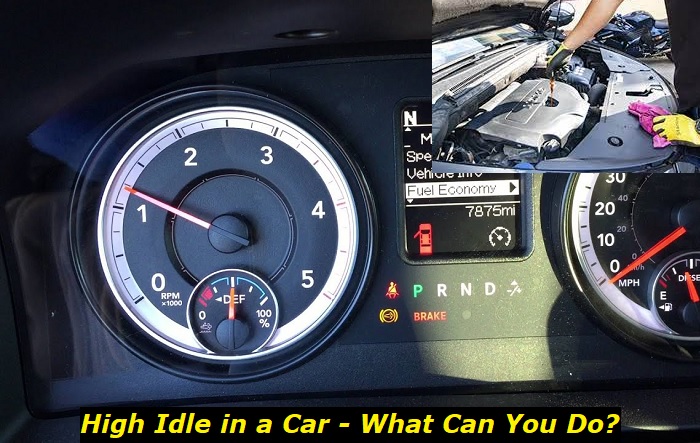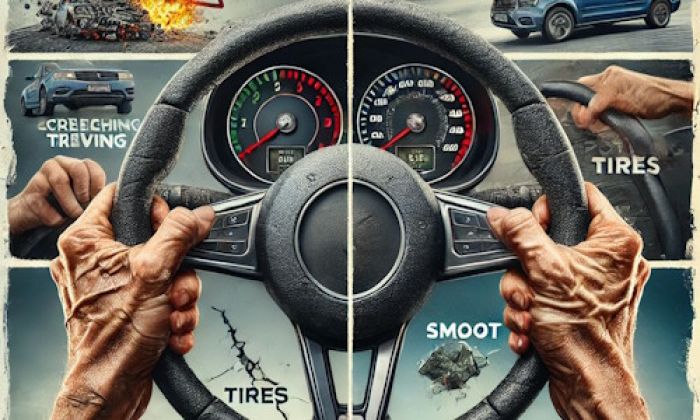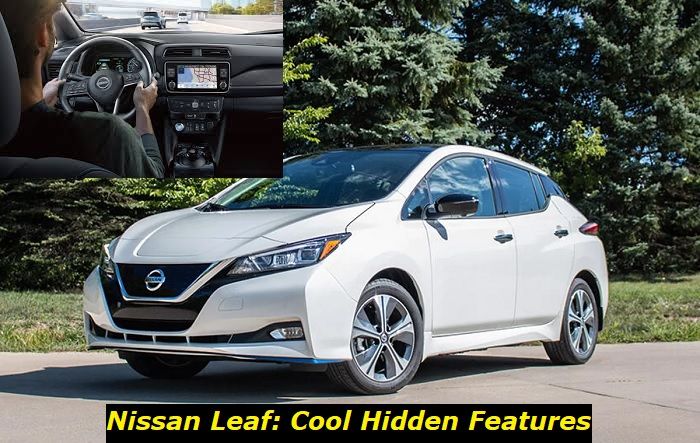High idle is one of the annoying problems that may happen with any fuel-powered car. Any engine works well thanks to a symphony of sensors, wires, ignition system components, and fuel supply tools. Once something goes wrong, the symphony breaks down and you only get huge problems instead of the wonderful sounds of a healthy engine.
Electrical problems leading to RPM anomalies highlights
- DIY repairs:possible but complicated
- Tools needed:inspection and repair tools
- Commonreasons:idle control valve, throttle position sensor, wiring, software
- Time to repair:1 - 2.5 hours
- Price for parts:$50 - $300
- Can you drive?Yes
- Alternative solutions:unplugging sensors, resetting or relearning sensors

How do you know that your car is idling high?
It's not hard to identify that the engine in your vehicle is idling high. You will notice several symptoms that will tell you about this:
- the vehicle vibrates a little more because of the vibrating engine;
- you hear the screaming engine or it works somewhat louder than usual;
- the tachometer needle is far from being in its usual place and flying well over 1000 RPM.
These three symptoms are clear signs that your vehicle is idling high and needs some help. But there are some situations when this is not the breakdown. First of all, you should understand that idling is the work of the engine when the car is fully stopped and the transmission is in Park or Neutral. If you drive and suddenly depress your gas pedal, the engine will not idle - it will rely on the energy from the wheels and will rev up accordingly to the wheel rotations.
Also, when you start your engine in the morning, it will idle high for about a minute or more depending on the temperature outside. This is the function that lots of car manufacturers introduce to let the engine warm up faster. After the temperature is a little higher, the engine will idle at the optimal range of RPM.
But if your engine revs up suddenly when the vehicle is at the red light or in a traffic jam, this can be the problem.
Is high idle actually dangerous for your car?
It's not extremely dangerous right now but if you keep driving like that, you can damage your vehicle. The problem is not only in pretty bad fuel consumption but also in engine health. High idle may cause overheating and this will eventually affect the health of the head, head gasket, pistons, and cylinder walls. Also, a high idle can cause excessive vibration and this will add problems to your engine.
If the engine RPM is extremely high - over 4000 RPM - at idle, you should stop the engine and not start it again before you locate and fix the problem. Such RPM may tell you about a really bad problem that may easily kill the engine if not controlled. We also know that an extremely high idle will not let you drive, so it doesn't even make sense to turn on the engine, in this case.
Now you understand that driving your car with a high-idling engine is not the best strategy. Let's see what you can do to cope with the problem.
What are the most common reasons for high idle?
We've come up with several things that most likely cause the high idle in your vehicle. Also, we've spoken to car mechanics and found the best ways to deal with each situation so you could easily build the most appropriate plan of action once you encounter such a situation.
Let's see what we could find out!
1. Limp mode
One of the most common issues that can cause high idle is the limp mode. It happens when the ECU sees some problem that can damage your engine. The ECU sends the system to the limp mode and you get restricted power, and low torque, your transmission may work only in a certain range of gears, etc. One of the symptoms of the limp mode is high idle - somewhere around 1500 RPM.
There are hundreds of reasons why your engine activated the limp mode. You can check it by using a scanner or you can just have your vehicle inspected in a repair shop. Sometimes, it's just about some broken wire or bad connection. But sometimes, the problems may be much more serious and hard to solve.
2. Engine sensors
One of the most common sensors that can cause high idle is the throttle sensor. It registers the position of the throttle and sends this information to the ECU. The ECU then compares the information with the data from other sensors in the engine and regulates the amount of petrol and air that is needed for optimal work.
But when the throttle sensor sends wrong information, the ECU may start making wrong decisions. It's not always that catastrophic - sometimes, the idle will only raise to 1000 or 1100 or it may jump. But sometimes, you will constantly see the tachometer needle resting at 2000 RPM or even higher. It depends on how badly the sensor is damaged.
Also, other sensors may cause this issue. Sometimes, it's not that bad and you can keep driving without paying attention to the high idle. But most likely, you will need to address the issue as soon as possible.
3. Air intake and fuel supply problems
Your engine may adjust the preparation of the air-fuel mixture if the ECU understands that it gets less air or less fuel than needed. This may cause high idle because the ECU will start pumping more fuel to compensate for the potential loss. Also, fuel consumption will gradually raise, if this is the case.
Check the fuel filter and air filters to make sure they are not dirty as hell. Also, check the fuel pump - just measure the pressure of fuel at the injectors. One more thing is to check if there are some blockages in the air pipes.
4. Injection or ignition problems
Fuel injectors work hard to spray the fuel into the combustion chamber. Once the fuel is sprayed into it, it mixes with air and sets to the flame by a spark plug. If one of the injectors is faulty and can't spray the fuel or is just clogged and dead, the certain cylinder will not work. This will lead to massive power loss and vibration. Also, if RPM is left at its average 800 rotations level, the engine will most likely stall.
So, in this case, the ECU decides to make the RPM higher to help it compensate for the loss of power and stability. The engine may work a little better and you can still drive. But you better drive directly to the repair shop.
Basically, the same thing happens when one of the spark plugs or coils fails. You will notice that one cylinder is off and you will need to repair the vehicle to get all the needed power back. Just replace the faulty spark plug or coil.
5. Faulty software
If high idle happens after you had your vehicle tuned, the reason is obvious. Bad software and improper ECU tuning can lead to the problem of all kinds and high idle is probably one of the most acceptable issues. Faulty software is not hard to repair - you should just go to the dealer or to a good repair shop familiar with your car model and let them restore the stock software for your vehicle.
Also, the problem may be in the bad ECU that lost some connections or was damaged by water or heat. In this case, you will have to replace the ECU or restore its electrical connections to avoid high RPM and all other kinds of problems.
Fixing and preventing the issue
To fix the problem, you may need to go to the repair shop. The easiest way to locate the issue is to use the scanner and check how certain modules and units work. We also think you can find the problem by yourself if you know something about how the engine electronics work. Just check one by one all the factors that we've told you about in this article and see if you can do something without professional help.
There are some important ways to prevent this issue from happening:
- you shouldn't forget about regular maintenance of your engine;
- change the fuel filter and air filter at least once every two years or more often;
- buy good filters and never use cheap aftermarket alternatives;
- ask mechanics to inspect the injection and ignition systems every time your vehicle is on regular maintenance.
Also, you shouldn't experiment with the quality of fuel. Make sure you change air filters more often if you drive in a very dusty area or you are off-roading a lot. If you still encounter the problem of high idling, just go to a professional mechanic and have your vehicle inspected.
About the authors
The CarAraC research team is composed of seasoned auto mechanics and automotive industry professionals, including individuals with advanced degrees and certifications in their field. Our team members boast prestigious credentials, reflecting their extensive knowledge and skills. These qualifications include: IMI: Institute of the Motor Industry, ASE-Certified Master Automobile Technicians; Coventry University, Graduate of MA in Automotive Journalism; Politecnico di Torino, Italy, MS Automotive Engineering; Ss. Cyril and Methodius University in Skopje, Mechanical University in Skopje; TOC Automotive College; DHA Suffa University, Department of Mechanical Engineering






Add comment